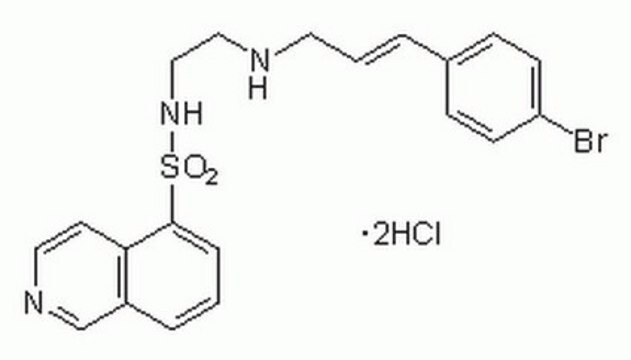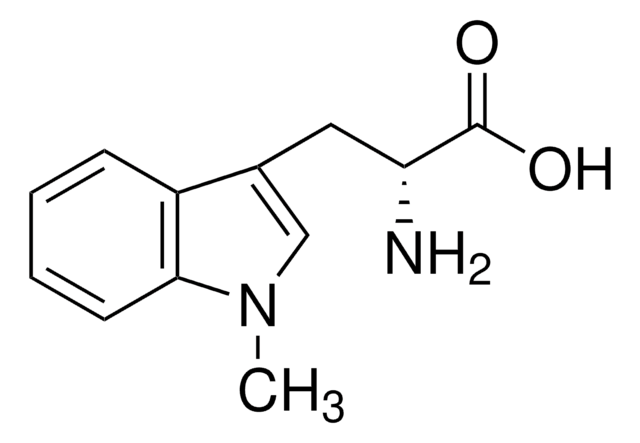399275
Nω-Hydroxy-nor-L-arginine, Diacetate Salt
A potent, selective, competitive, and high affinity inhibitor of arginase.
Synonyme(s) :
Nω-Hydroxy-nor-L-arginine, Diacetate Salt, nor-NOHA, 2CH₃CO₂H, L-2-Amino-(4-(2ʹ-hydroxyguanidino)butyric Acid, 2CH₃CO₂H
About This Item
Produits recommandés
Niveau de qualité
Pureté
≥97% (TLC)
Forme
solid
Puissance
2 μM IC50
Fabricant/nom de marque
Calbiochem®
Conditions de stockage
OK to freeze
desiccated (hygroscopic)
Couleur
off-white
Solubilité
water: 50 mg/mL
Conditions d'expédition
ambient
Température de stockage
−20°C
Description générale
Actions biochimiques/physiologiques
arginase from rat liver
mouse macrophages (IC₅₀ = 50 µM)
Conditionnement
Avertissement
Reconstitution
Autres remarques
Meurs, H., et al. 2000. Br. J. Pharmacol. 130, 1793.
Moali, C., et al. 2000. Biochemistry 39, 8208.
Tenu, J.P. et al. 1999. Nitric Oxide 3, 427.
Moali, C., et al. 1998. Biochemistry 37, 10453.
Custot, J., et al. 1997. J. Am. Chem. Soc. 119, 4086.
Informations légales
Code de la classe de stockage
11 - Combustible Solids
Classe de danger pour l'eau (WGK)
WGK 1
Point d'éclair (°F)
Not applicable
Point d'éclair (°C)
Not applicable
Certificats d'analyse (COA)
Recherchez un Certificats d'analyse (COA) en saisissant le numéro de lot du produit. Les numéros de lot figurent sur l'étiquette du produit après les mots "Lot" ou "Batch".
Déjà en possession de ce produit ?
Retrouvez la documentation relative aux produits que vous avez récemment achetés dans la Bibliothèque de documents.
Les clients ont également consulté
Notre équipe de scientifiques dispose d'une expérience dans tous les secteurs de la recherche, notamment en sciences de la vie, science des matériaux, synthèse chimique, chromatographie, analyse et dans de nombreux autres domaines..
Contacter notre Service technique















